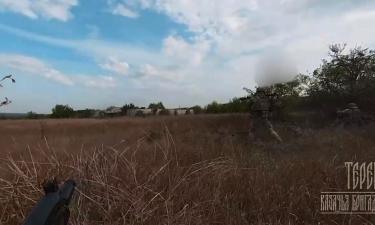African officials propose to slaughter elephants to curb their growing population
The environment minister on Wednesday proposed a package of measures - including limited culling and contraception - to slow rampant elephant population growth but stressed there would be no mass slaughter.

The elephant population of 20,000 is growing at a rate of more than 6 percent per year, disrupting the delicate biodiversity in the flagship Kruger National Park and other wildlife parks, Environment Minister Marthinus van Schalkwyk said.
He said the government has proposed new management measures, including removal of elephants to other areas, creation of special enclosures to protect other species, expansion of parks, contraception and culling.
"I would have preferred not to consider the options of both culling and contraception," he said.
But he said culling would only be considered a last resort.
"The government will never give a blank check to culling," van Schalkwyk told journalists at the Addo Elephant Park.
Environmental groups and other interested parties have until May 4 to comment on the proposals and then after that it may take many more months to bring the measures into force.
South Africa has been hugely successful in managing its elephant populations, once on the verge of extinction. But herds in the Kruger Park, and also smaller parks like Addo, are expected to double by 2020.
"We can conserve elephants but we have to start to worry about what we conserve with it," said Prof. Graham Kerley, an elephant expert who works with officials at Addo National Park, which currently has some 450 elephants.
The announcement followed months of impassioned debate, with some conservationists arguing that overall biodiversity should take priority and animal welfare groups outraged at the prospect of slaughter.
The government is fearful of upsetting tourists who flock to see the Big Five animals in the Kruger. But van Schalkwyk said the government proposal was designed to preserve the balance of nature that draws visitors.
The country culled a total of 14,562 elephants between 1967 and 1994. Without that cull, the population would have rocketed by now to 80,000, according to park estimates. Based on current trends, the population of 17,000 is expected to reach 34,000 by 2020 if not curbed.
In 2005, the South African National Parks said culling should be considered one way to limit the population boom.
There is no regional consensus on the issue. South Africa, Namibia and Botswana all have booming elephant populations, while East African nations such as Kenya are struggling. Trade in ivory has been banned since 1989 to try to combat poaching, despite appeals by South Africa to resume sales and invest the proceeds in its parks.
Van Schalkwyk said the "no action" option is no longer realistic, and the government must act in the interest of "sustainable conservation."
A single elephant devours up to 300 kilograms (660 pounds) of grass, leaves and twigs a day. And they are messy eaters - 60 percent gets wasted.
"The feeding impact of elephants is enormous because of their large size and the way they feed," Kerley told reporters who visited the park Tuesday.
In Addo, they feed on 146 different plant species - of which 75 are classed as rare, he said.
Addo is regarded as a model in elephant management. Each elephant has its own computerized file and name, and park officials can distinguish them even at a distance.
Park authorities are proud of their success in reintroducing the endangered black rhino into the park, where it lives in harmony with the elephant, but fear they could start competing for food.
"This park is not about elephants and rhinoceros; it is about the full scale of diversity," said Kerley.
Addo - which is about an hour's drive from the southern coastal city of Port Elizabeth - was established as a national elephant park in 1931 after local hunters and farmers decimated the herd to just 11 beasts, the AP says.
With the acquisition of more land and extensive fencing to protect the animals from harm, the population has mushroomed.
Already, the crowding is leading to tensions, according to Kerley. The females live to about 65 years old, but fighting among the bulls has reduced their average life span to 45 years - not long enough for them to grow the mighty tusks that are the trademark of other South African elephant populations.
Subscribe to Pravda.Ru Telegram channel, Facebook, RSS!





